The region where the Mustang Circuit and Upper Mustang Trek takes place was only opened to trekkers in 1992. Before that, it was literally a forbidden kingdom, and even now only sees around 700 trekkers a year. The Mustang Circuit itself takes from 12 to 14 days. The continuation onto the Upper Mustang trek can take up to an additional 4-6 days.
On this page, you will find a comprehensive and impartial guide to the Mustang Circuit trek. Discover when to go, what the route entails and other FAQs about the Mustang Circuit and Upper Mustang Trek.
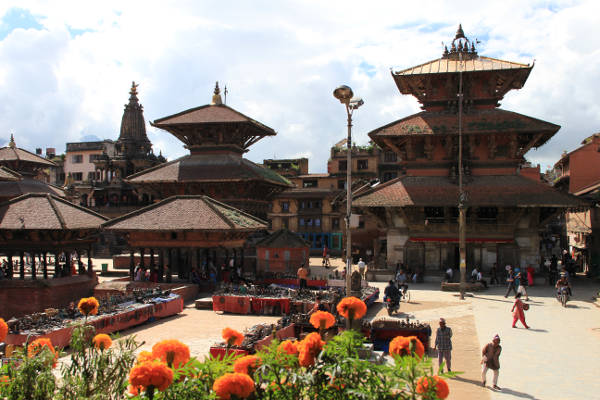
Mustang Circuit and Upper Mustang Trek
Sights on the Mustang trek include monasteries and castles dating back to the 14th century, fossils which are believed to be older than the mountains and the walled city of Lo-Mathang.
Lo-Manthang has walls 20 feet high with a turret at each corner. Often, on street corners you will find small groups of women spinning wool. Towards the end of the afternoon, large herds of goats are taken through the city gate and back to their sheds. There are beautiful, large monasteries such as Thugchen Gompa. An amchi is a traditional Tibetan doctor, and the amchi museum and school await you.
Among the most eye-catching attractions along the trek are the colourful rock formations found here, which could pass for the work of a major artist. This trek is of moderate difficulty and, being in the rain shadow zone, less subject to rain in the monsoon season.
One highlight is the three-day Tiji festival, which takes place at the end of the dry season in late winter or spring. Here, a thousand people re-enact a myth of a deity named Dorje Jon who fought with his demon father to the save the kingdom – his father deprived it of water, a highly-precious resource. Everything along this trek looks much as it did 600 years ago.
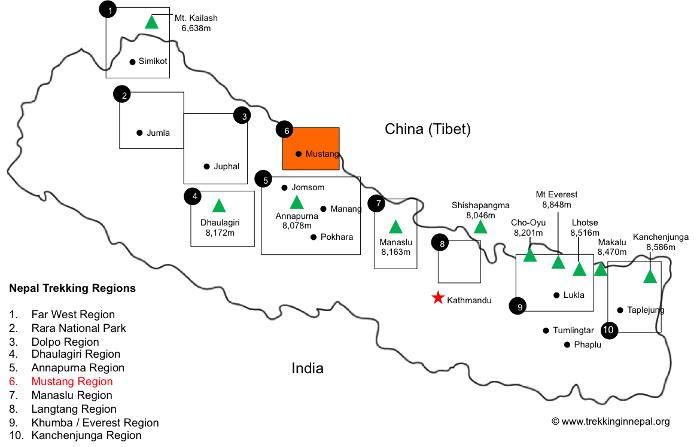
Regional Map
The trek takes place north of two giants – Annapurna and Dhaulagiri, at the southern tip of the Tibetan Plateau. Lying so close to Tibet, the Tibetan influence is heavy.
It is a massive, high valley that is arid and dry, brimming with eroded canyons and those colourful rock formations. It has the appearance of a desert and was once famously described as “barren as a dead deer.”
The average elevation of Mustang is 13,000 feet.
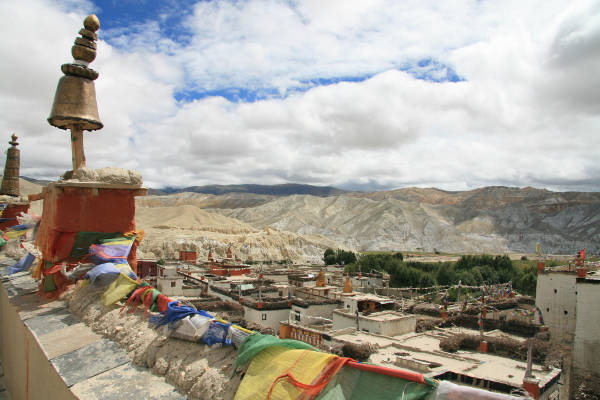
Mustang Circuit Trek Itinerary
Below is a detailed Mustang Circuit itinerary. Please note that there are several Mustang Circuit and Upper Mustang Trek itineraries that can be done.
Below, we have laid out the most popular version – 14 days, leaving from Kathmandu. You can choose a slightly longer or shorter version depending on the amount of time you have.
Day 1-2: Arrive in Kathmandu
You begin by arriving at Kathmandu’s Tribhuwan International Airport and transfer to a hotel.
The second day is given to permit preparation. With a day of leisure, you can explore not only Kathmandu but also Bhaktapur or Patan. Bhaktapur features the best-preserved palace courtyards and old city centre in Nepal, leading to its declaration as a UNESCO World Heritage Site.
Patan is renowned for its rich cultural heritage, especially in terms of arts and crafts. Many locals continue to refer to it by its Sanskrit name of Lalitpur – City of Beauty. Its Durbar Square is possibly the greatest collection of palaces and temples in Nepal.
Day 3: Drive to Pokhara
You are driven to Pokhara, taking five or six hours along the Prithivi Highway. The Himalayan ranges of Annapurna, Ganesh Himal and Manaslu can be seen, if the weather permits it.
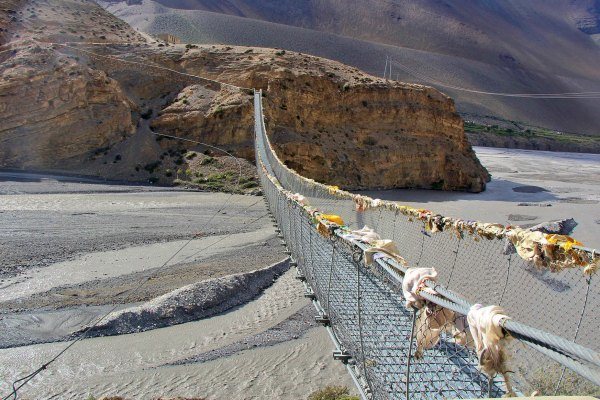
Day 4: Fly to Jomson and hike to Kagbeni
You fly to Jomson. The flight alone is worth doing, going above, as it does, the deepest gorge in the world. Here your treks begins. Kagbeni is your destination, a settlement of flat-roofed houses. You can find a Tibetan Buddhist gompa of the Sakyapa sect there during your visit. The views of Annapurna, Dhaulagiri, Nilgiri and Tilicho are scintillating. From this point on, your accommodation will be in a typical Nepal tea house.
Day 5: Trek to Samar
You trek via the villages of Tangbe, Chhusang and Chele, with a fantastic landscape below. There is a small but very notable cave gompa in Chhusan. You will next arrive at the Dajori La Pass. A further half hour of walking brings you to Samar.
Day 6: Trek to Geling
You head for Bena La and then Yamda La. This is where you are presented with your first substantial view of the Upper Mustang region. You now hike to Syangboche, after which is Geling, where there are two gompas dating to the 15th century which are certainly worth seeing.
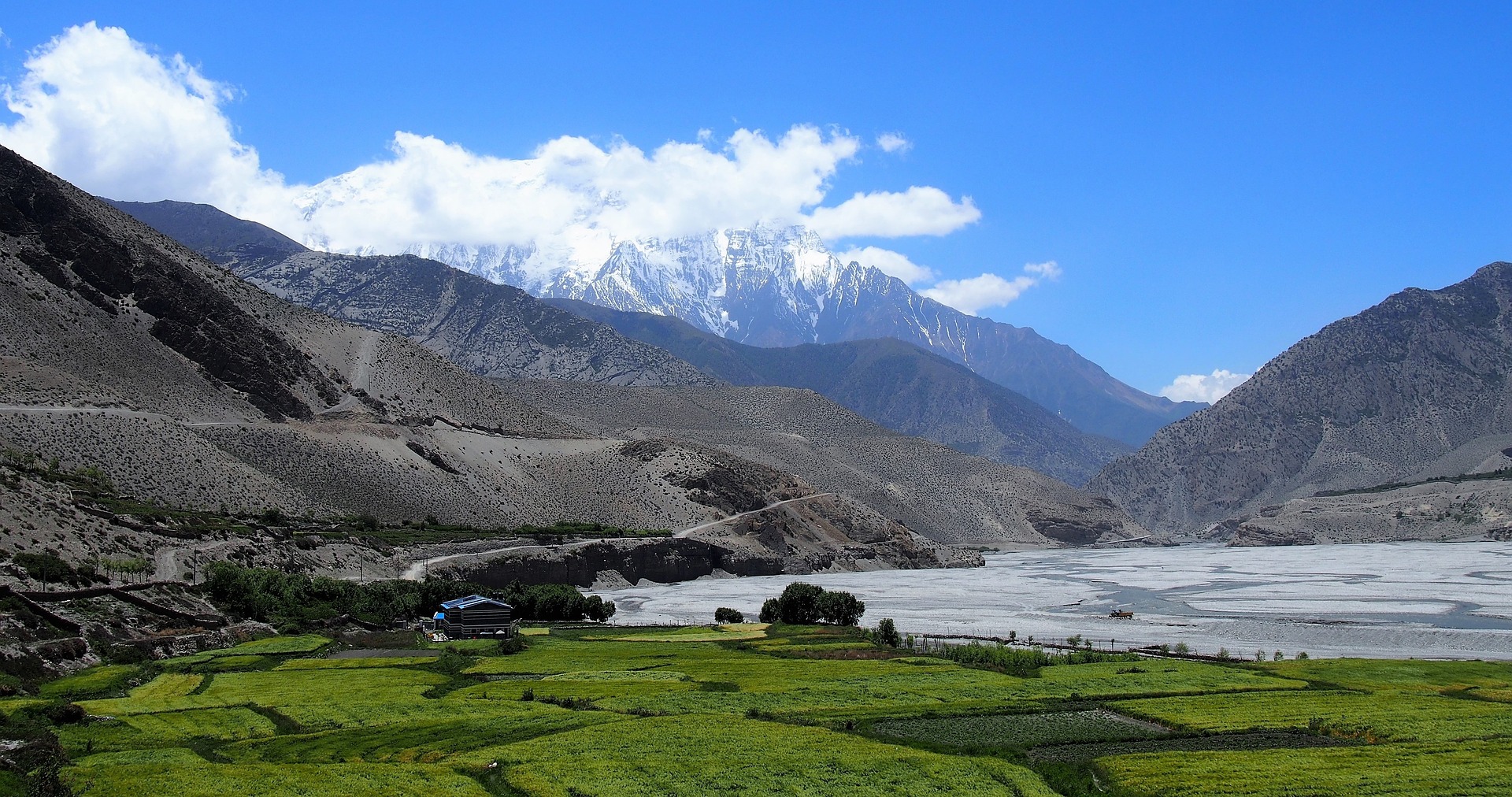
Day 7: Trek to Tsarang
Today, your trek takes you steeply uphill to a pass where there is a fine view of the Annapurnas. Then you trek to Ghemi before trekking down a stream and across a suspension bridge.
You ascend the upper valley and find before you the longest mani wall in the region. Mani stones are inscribed with the mantra of Avalokiteshvara, a bodhisattva – something like an angel in Buddhism. You next climb to another pass, Tsarang La, and descend to Tsarang, once the capital of Mustang.
Day 8: Hike to Lo-Manthang
A short walk leads to one of the most noteworthy sites along your trek – Lo-Manthang.
Day 9: Rest Day at Lo-Manthang
You spend another day at Lo-Manthang. Four large gompas are worth visiting: Jampa Lhakhang, Jampa gompa, Chodey Gompa and Choprang Gompa.
Day 10: Hike back to Ghemi
You trek back to Ghemi.
Day 11: Hike back to Samar
Next is Samar, which was recently seeking a painter proficient in traditional Buddhist wall painting and a statue builder to restore a centuries-old clay Buddha.
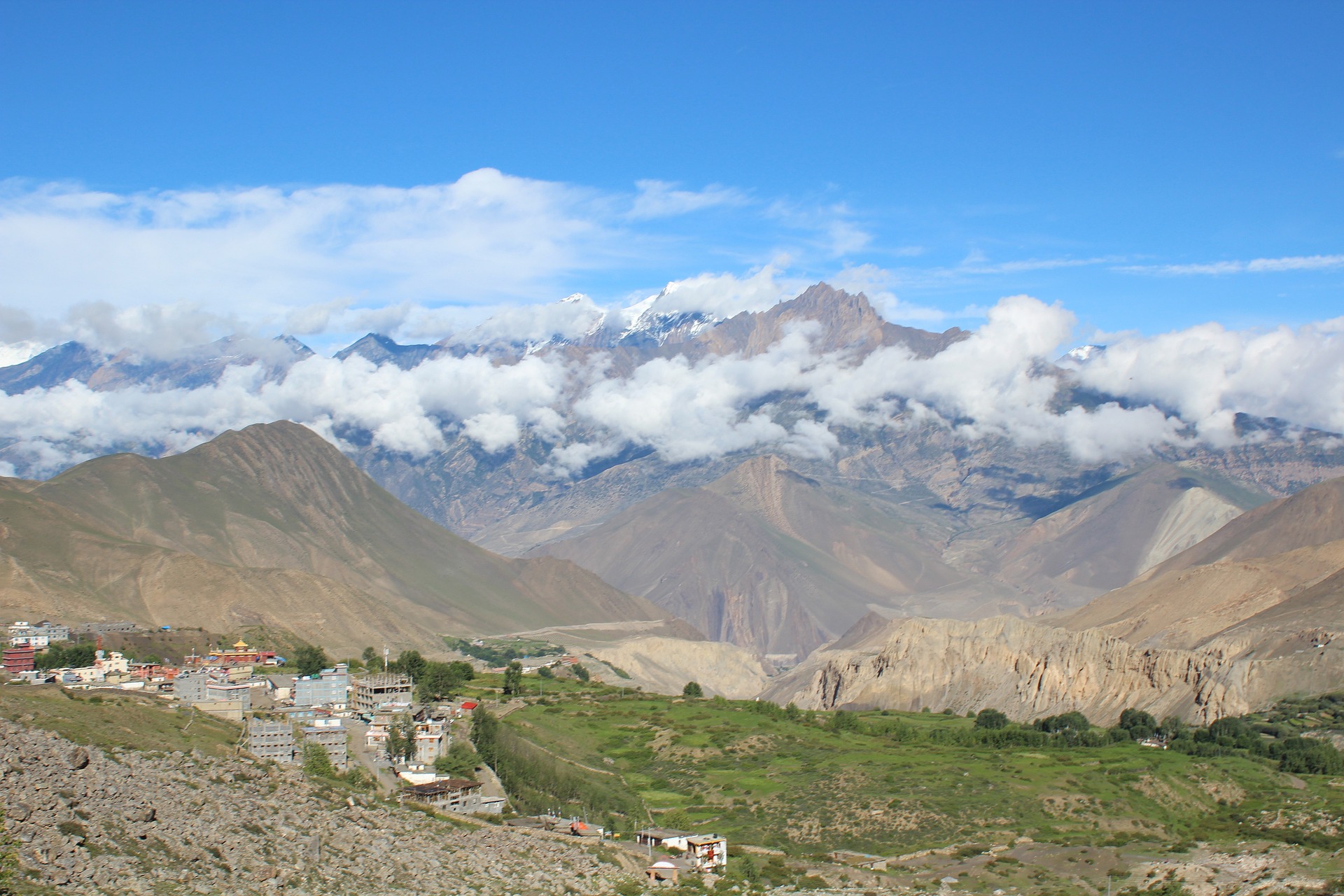
Day 12: Back to Jomson
You return to Jomsom.
Day 13: Fly back to Pokhara
You fly back to Pokhara.
Day 14: Fly back to Kathmandu
Drive or fly back to Kathmandu.
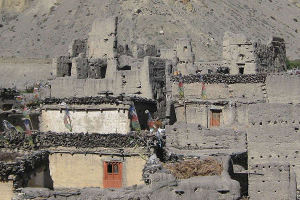
Mustang Circuit Trek FAQ
How much does the Mustang Circuit trek cost?
On average, you will spend between $2,500 and $3,500 on the Mustang Circuit trek if you do it with an official tour company. You could get away with doing it for less if you put together a DIY Mustang trek.
Are permits required for the Mustang Circuit trek?
Yes, permits are required for the Mustang Circuit trek. Sadly, permits for this region are more expensive than for other areas. You will require a Mustang Permit for a minimum of 10 days, costing $500, and an Annapurna Conservation Area Project entry permit, costing $20. You will also need a guide, who will cost on average $25 per day.
When is the best time to trek in Mustang?
The best time to trek in Mustang is from March to early November, which is considered the official trekking season in the region. Being in the rain shadow, trekking during the monsoon season of mid-June to mid-September is also an option, unlike for Everest treks and Annapurna treks.
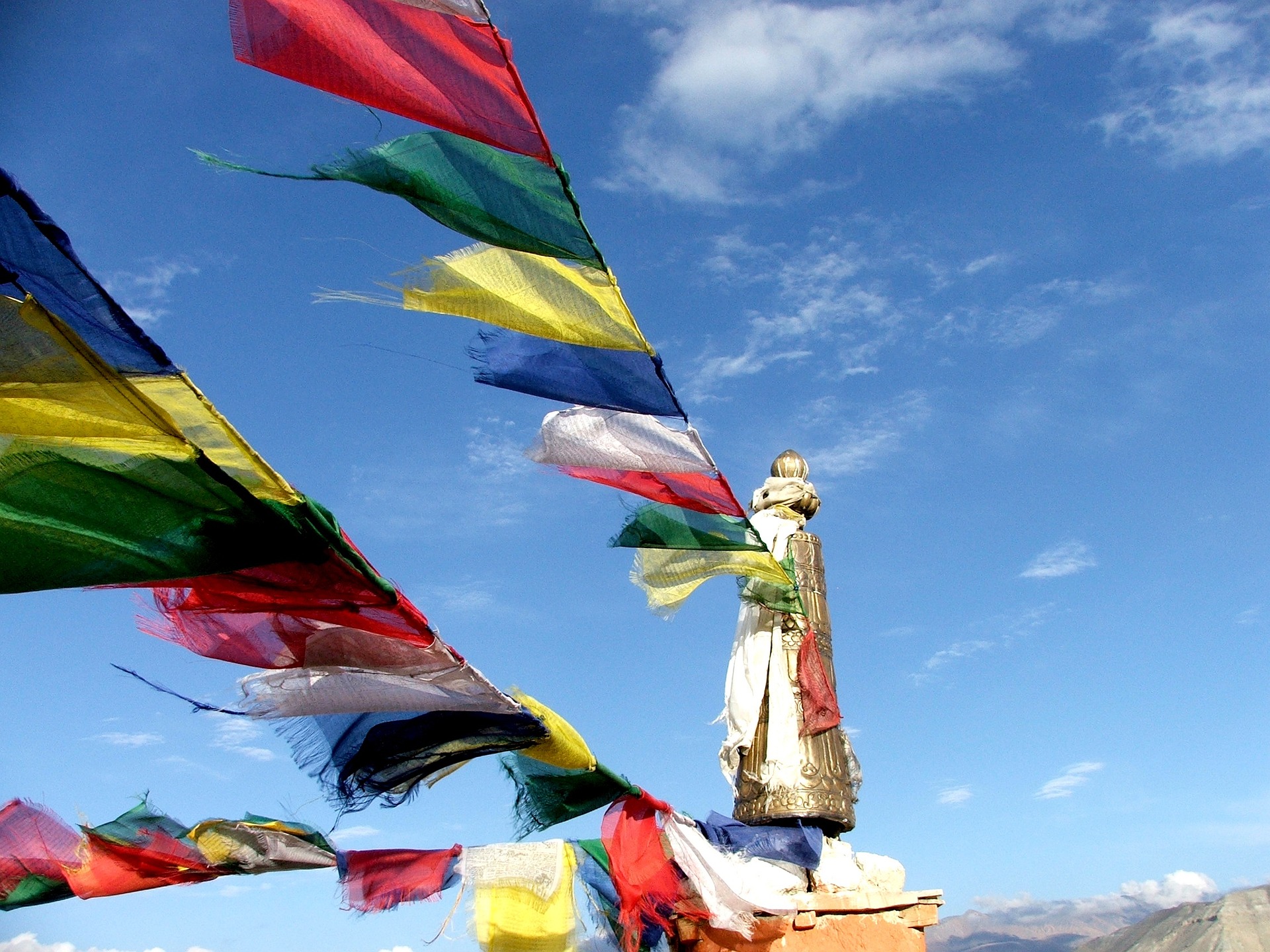
Is altitude sickness a risk on the Mustang Circuit?
Yes, there is a risk of altitude sickness on the Mustang Circuit and Upper Mustang Trek because it ascends to some high-altitude points. At its highest point, Mui La, you will reach an altitude of 4,175 meters (13,700 feet).
How difficult is the Mustang Circuit trek?
The Mustang Circuit and Upper Mustang Trek is considered moderately difficult. You will be walking between 5-7 hours per day for the journey and the altitude is often high. Terrain is fairly easy going but a good level of fitness is required.
Are there any recommended guidebooks for the Mustang Circuit and Upper Mustang Trek?
Yes, there are a few Mustang guidebooks that we highly recommend for trekkers.
The Mustang Trek is covered in Annapurna: A Trekker’s Guide by Sian Pritchard-Jones and Bob Gibbons and in Shangri-La: A Travel Guide to the Himalayan Dream by Michael Buckley.
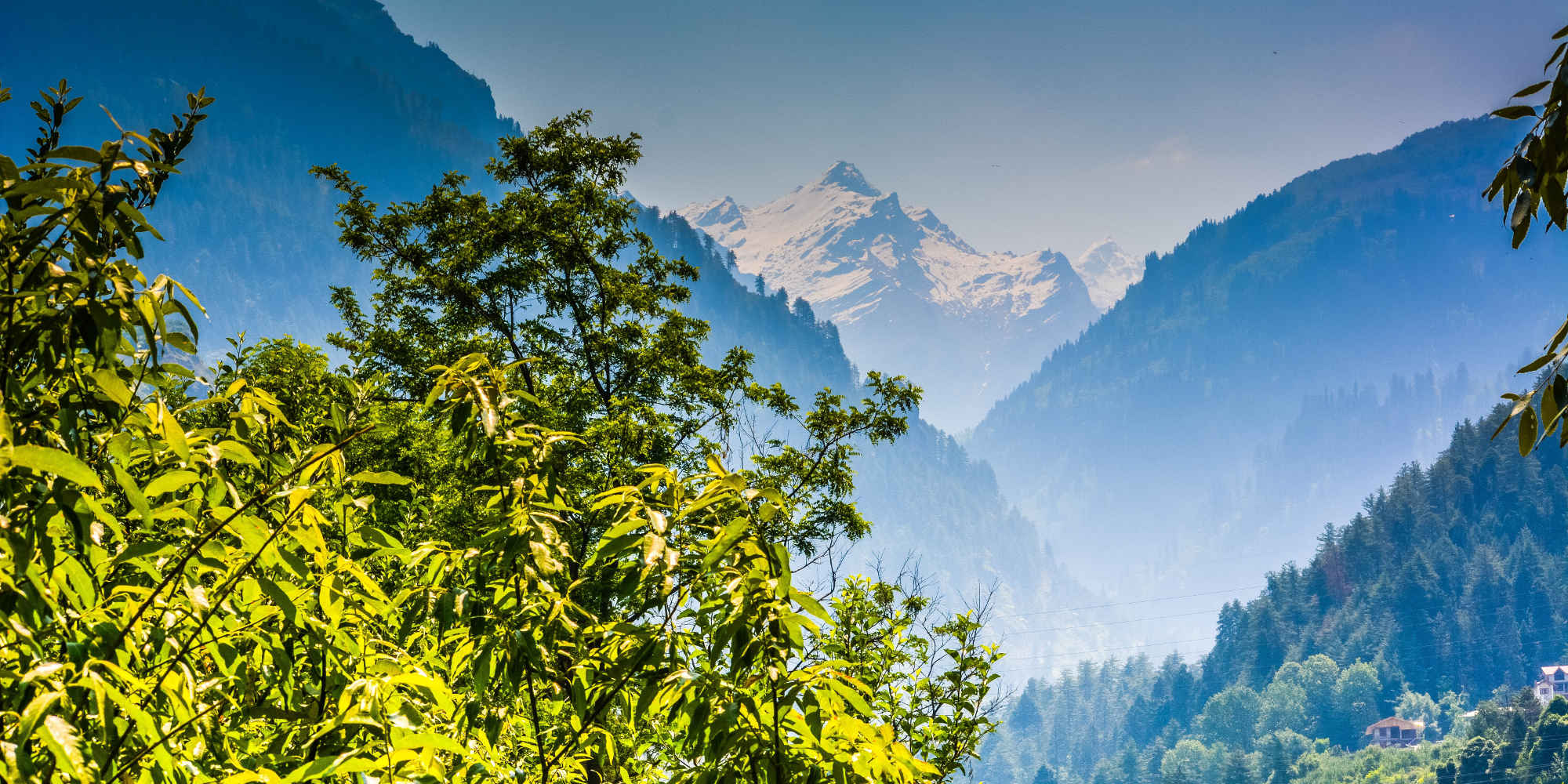
Tags: Mustang Trek, Mustang Circuit, Upper Mustang Trek, Mustang region, Mustang Nepal, Mustang Circuit Trek.
Continue browsing
See more information on Nepal. Or check out these other Nepal hiking articles:

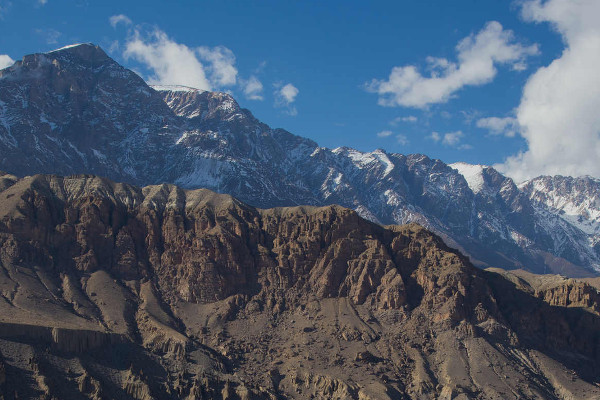
Want to do the trek in April or may need costs and can I do it single or join a group
Hi there is a group of three of us looking to do the upper Mustang trek starting at the end of October and finishing in the first two weeks of Nov. Is that too late in the season? Will there be lodging still available? Also which guide services do you recommend? Thank you for any help you can offer. Cheers, Carl
Hi Carl, it is possible to do the Mustang Circuit this late in the year. I’m not sure on availability of guides and teahouses though. Anyone want to chime in here, to help Carl?